The dump is just up the road about 20 minutes. Its an auxiliary dump, meaning its for locals and basically a large canister with a locked fence around it. The whole idea is to prevent bears from getting in, and to help locals with their trash and bear management. Last year though I did see a horse that was dumped off there outside the bear management fence. Although the bears couldn’t get into the trash, they sure did get into the horse, along with the wolves.
I really don’t know many people up in the Crandall area yet, nor do I know too many of the hikes. I hiked with the wolf study gals last fall there a lot, but mostly that was through brush directly to GPS sites where their collared wolf had lingered for more than an hour.
So I stopped and introduced myself at the Hunter Peak Ranch. Its an old dude ranch that now mostly houses guests and horsebackriding. The owner, Shelley Cary, was very gracious and I talked for a while with her and her family. They serve dinner to guests and outsiders with advance notice. Something good to know for any guests I have. They also had some great ancient photos on the walls of homesteaders from the Crandall area. Several names I’d heard of. One of them, Norman and Mrs. Dodd, homesteaded in my area. Apparently people always had to refer to Norman’s wife as Mrs. Dodd. They lived ten hard miles from the meeting house, which was a one room schoolhouse, and came by a team of mules pulling a buckboard. Another photo was of the old post office, a long wooden building in disrepair.
I took a short 5 mile hike along the Clark’s Fork trailhead. The Clark’s Fork trail is well marked and well used by horses. Its in open sagebrush, so if a hiker does encounter a bear, there’d be plenty of room to move.
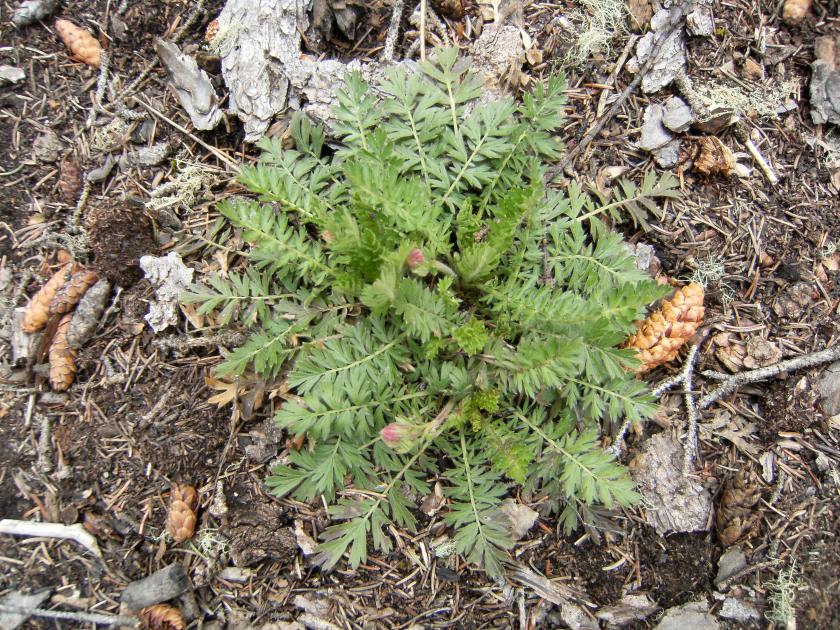
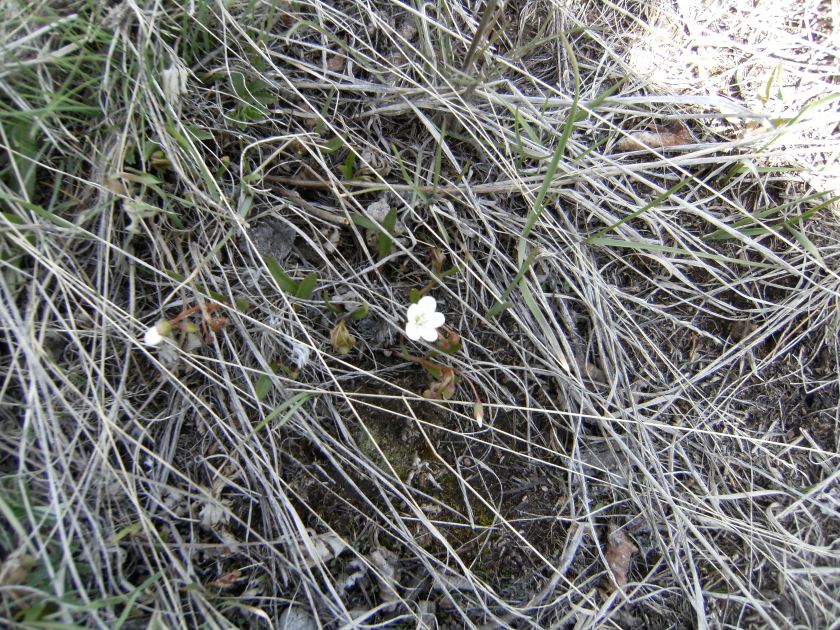
I’ve been on this trail before and knew of a wonderful secret spot where the river drops into a gorge.
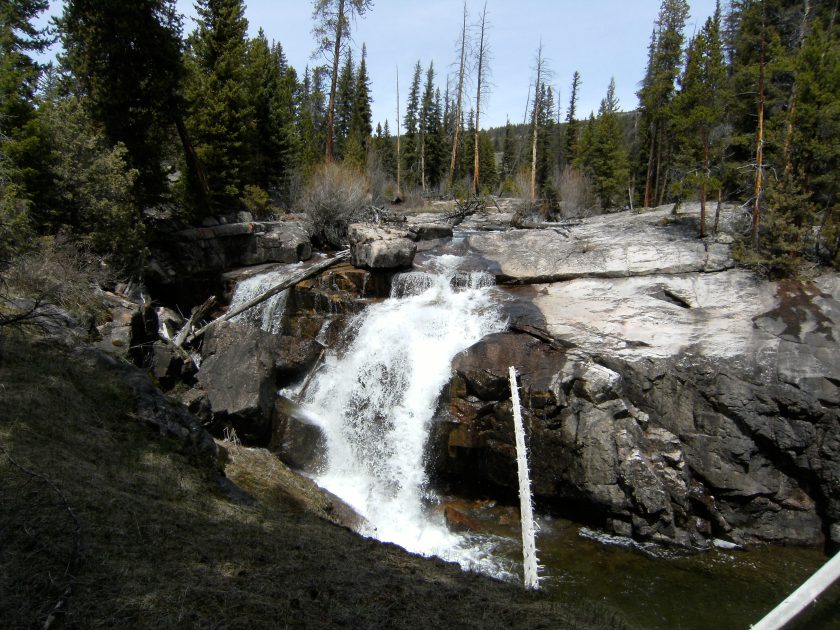
I wandered off-trail to the waterfall.
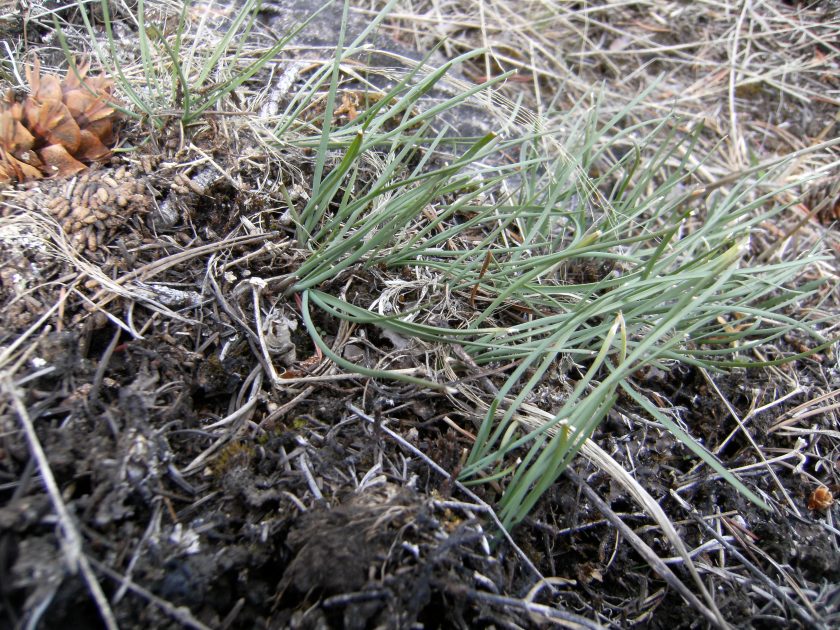
There was plenty of moose sign in the willows around the river, as well as a pair of nesting ospreys. Koda and I sat and hung with the fish hawks for a while. The female was sitting on her nest, although she took some time out to try and scare me off. The male sat nearby with a piece of fish in his talons.
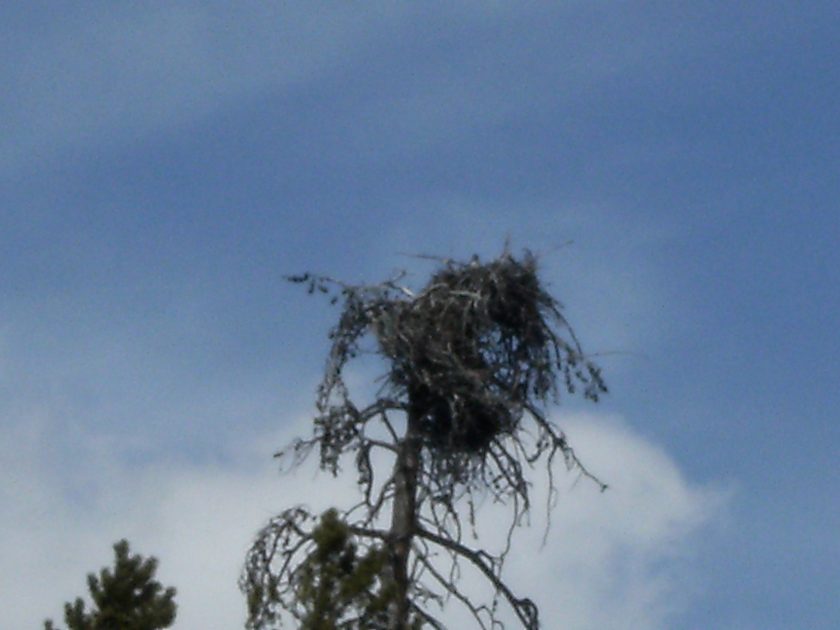
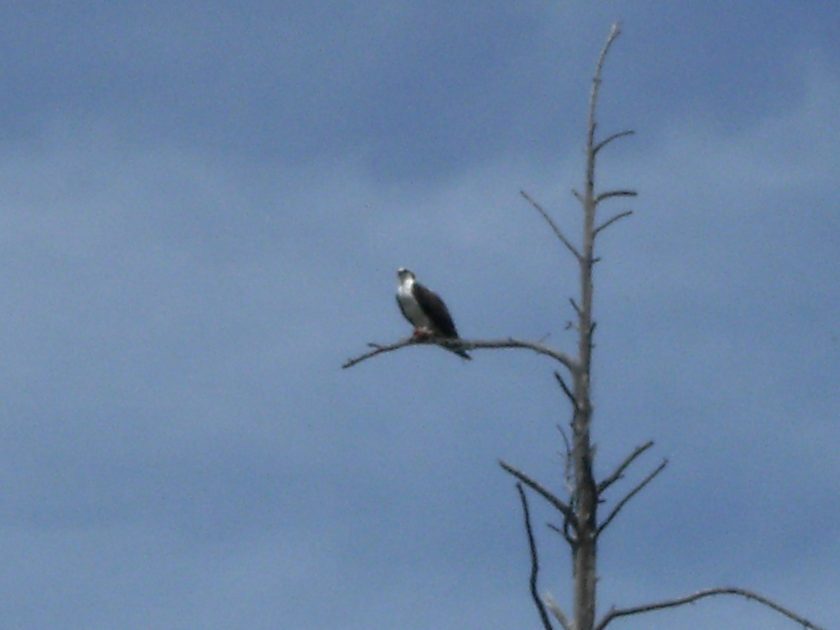
There’s always a plethora of anti-wolf talk in our area. Besides aggrieved hunters and ranchers, I once talked with a woman whose parents ran an outfitting company. She was only 16 and hated wolves. She told me a story about how they had taken their supplies in the fall up to a campsite in anticipation of bringing some hunters up there the next day. They’d left three dogs with the supplies, alone, overnight, way up near the Yellowstone border. This was something they were used to doing, for years. But this year was different. When they returned the following day, one of their dogs had been killed by wolves.
After lunch, on the way back to the trail, I ran into a fellow resting his horse. I introduced myself and found out he was a local.
“Find any horns?” he asked.
Horns refers to antlers. People around here spend lots of time looking for antler sheds in the spring. They can be worth big money.
“Nope, wasn’t looking for any.” I replied. “But I did find a pair of nesting ospreys and moose sign.”
“I saw four wolves up on table mountain. They’ll eat your dog, you know. Just like that.”
“Yep, that’s why I keep him on that electronic collar. We have an agreement he and I. I protect him from wolves and he watches for bears.”
“Those frickin’ wolves, they’ve ruined everything. There used to be so many bull elk here. I wish they’d never put them here.”
“I like them.”
“They’re everywhere. They ran after an elk right through the trailer park the other day.”
I didn’t think he heard me so I said it again. “I like them here.”
“There’s no more moose anymore. They’re history. They’ve frickin’ ruined it all. Things used to be good.”
“I seem to be seeing a lot of moose this year. Maybe their numbers are coming back.”
“Oh, where you live maybe, but not here. Wolves have ruined it all. Last year we found three bull elk kills up Crandall creek. They just hone in and kill them. There’s no more left around here.”
I didn’t bother to tell him that I knew the elk study coordinator had hiked up there this winter and taken samples of the bull kills he’d seen. He said their marrow was like jelly, an indicator of poor health. I mentioned all the grizzlies in the area.
“Oh, those grizzlies don’t do much. Its those damn wolves.”
That’s a typical conversation I’ve had many times. There is a lot of animosity and anger about the wolf introduction. These are people who live on the land and know the land, at least in a certain way. They know where the wolves are denning even though the Game & Fish keep it secret. They see grizzlies when they’re out. They feel comfortable in the outdoors, but they have been used to not having wolves around for a very long time. And they resent having to take them into account now.
Its a most controversial matter, wolves. I tend to be on the side of the wolves, but I also am sympathetic towards the ranchers. I feel that its’ important to work with ranchers and begin to develop practices that protect their livelihood. I also know that these large ranches are one of the last ways we can protect the land here. If the ranches and ranchers are not taken into account, if they loose their land, then those large tracts will be sold and chopped up for development. That in itself is even more of a death blow to wildlife, especially grizzlies and wolves. New ranching management practices are critical for wildlife protection as well. As one of the wolf researchers said to me last year “Something’s got to change. There’s just too much killing going on” in reference to all the wolves killed by Wildlife Services in retaliation for calf predation. (For a video of wolves in my valley, click here)
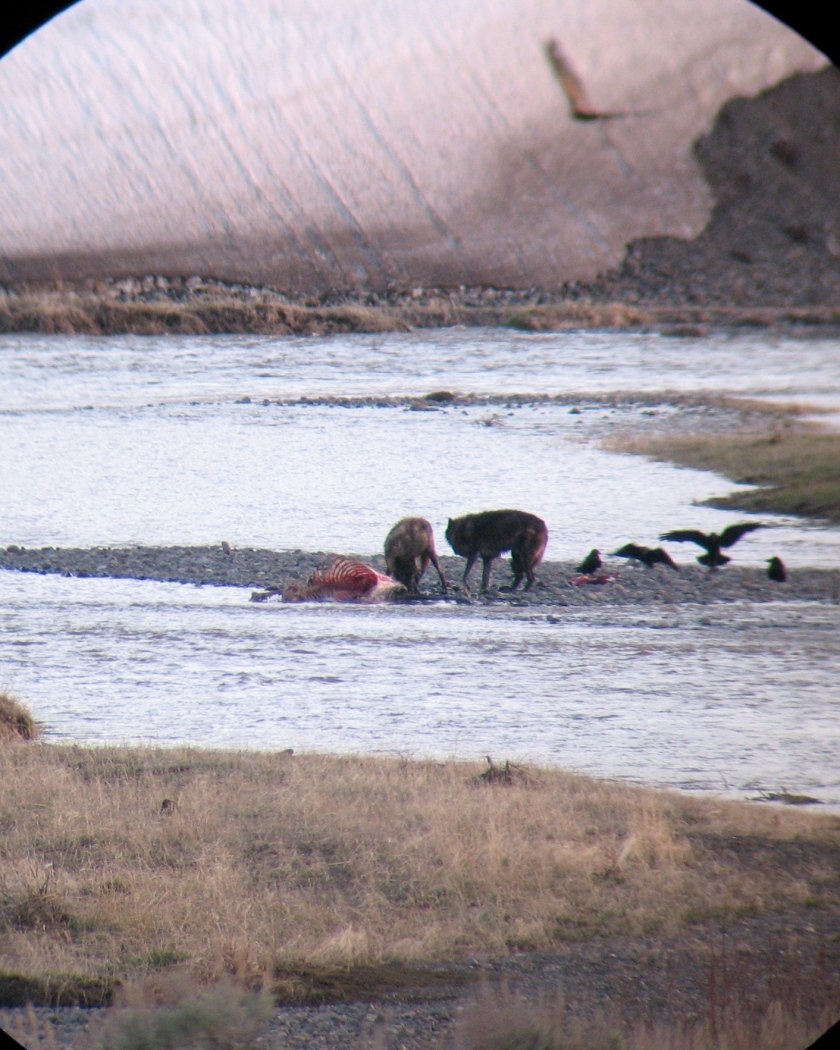
In contrast, I was reading in the Wind River Reservation Wolf Management Plan about how some of the elders of the tribe view wolves. There is controversy on the reservation as well, the report says, because many Native Americans have livestock. But there is magic, wisdom, and most importantly, respect, communicated in their ancient views. Here is an excerpt from that report.
Traditional views recognize wolves as kin, as strong, as deserving of respect and placed here by the Creator for a purpose. The Shoshone word for wolf means “big coyote.” Wolves lived a long time, were very smart and observant, and listened well. When wolves appeared in a vision, one was to follow what the wolf showed you. The wolf was secretive and special and used to talk with people through telepathy. Wolves were helpers. Wolves were sacred and to be left alone, however sometimes people had to kill them. People were to be careful around them. Wolves could teach virtuous things to people. They were an example of how to care for family members because they took good care of the young as well as the old. The packing behavior of wolves showed people that they should not go out hunting alone. Wolves also showed people to use the entire game animal (the meat, bones, hooves, marrow, skin, etc.) – not to waste any of it. Wolves wandered to wherever the food was, like earlier people did. They did not know boundaries. Now wolves are being confined to certain areas like Native Americans have been confined to Reservations.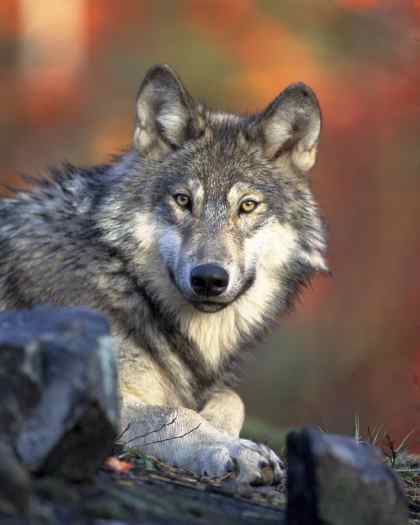
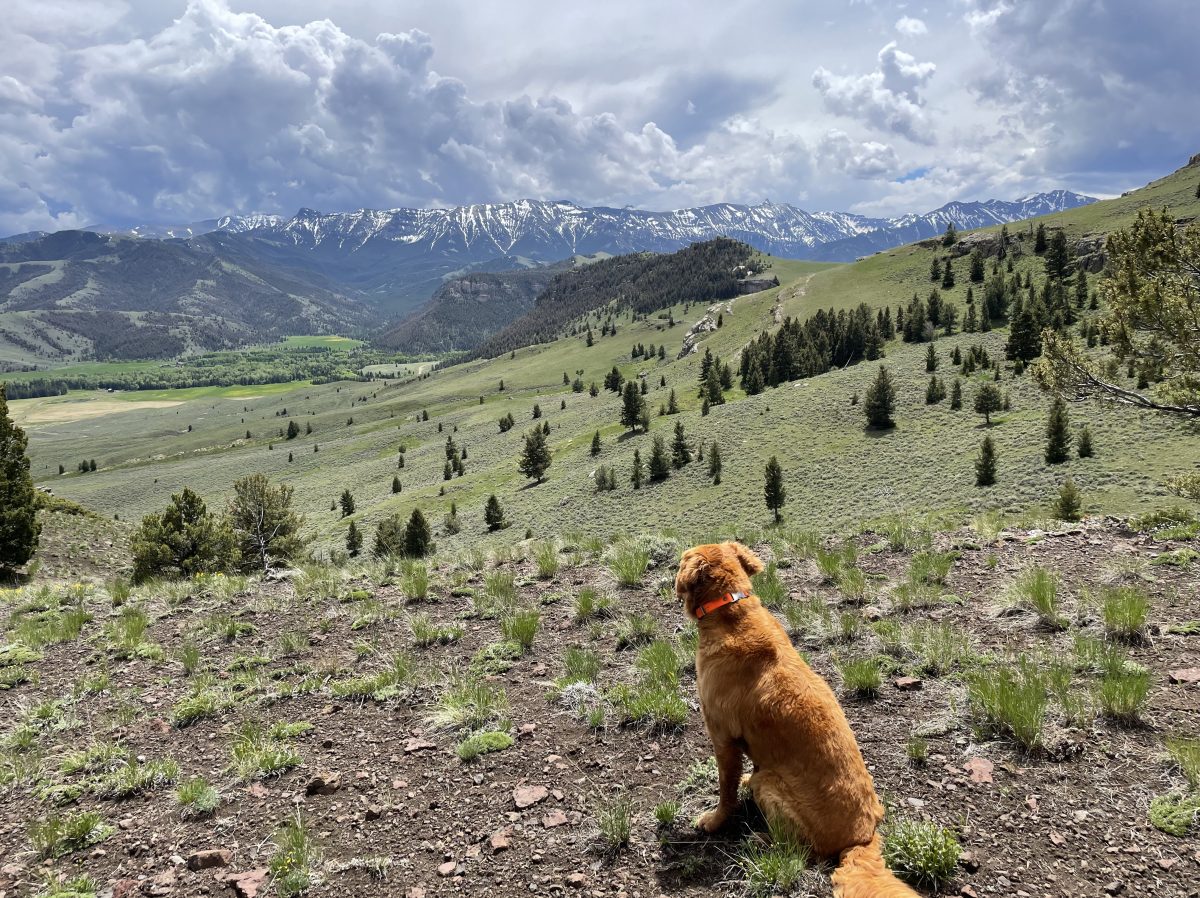
I was wondering about the close-up photo of the wolf. Is it one of your photos that you shot?
LikeLike
I admire your view of wolves and nature. I hope to visit a wolf sanctuary in the future. I find it horrifying that the wolves are being slaughtered in Idaho, Utah, and Alaska. I wish they would leave them alone.
LikeLike
Hi Shirley, You might enjoy my recent post entitled The Wolves have A Good Day. There is a video on the post of 2 wolves on a kill by the side of my dirt road. Visit Yellowstone in May and you’ll probably see wolves in the Lamar. Best, Leslie
LikeLike